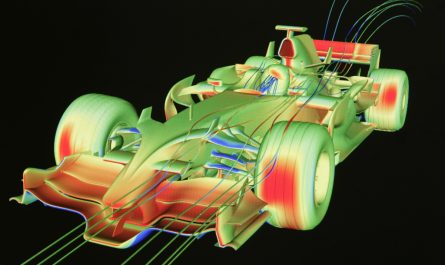Programmable Logic Controllers, commonly known as PLCs, have become a ubiquitous tool used across many industries for automation and control applications. Though originally designed for controlling industrial electromechanical processes, PLCs have evolved significantly over the decades and are now found powering some of the most advanced automated systems. This article takes an in-depth look at PLCs – what they are, how they work, their evolution over time, and how they are shaping the future of automation.
What is a PLC?
A PLC is a small industrial computer used to monitor inputs and control outputs of a manufacturing or industrial process. At its core, a Programmable Logic Controller consists of a processor, memory, and input/output modules. The processor continuously scans the status of connected sensors and inputs to determine if conditions are met for controlling outputs like motors, valves, or alarm indicators. PLC programs are written in ladder logic or other programming languages that represent how inputs map to outputs based on programmed logic.
The simple programmability of PLCs allows them to take on complex control applications that previously required hard-wired relay panels or expensive customized electronics. PLCs act as the brains of an automated system, continuously executing their user-programmed instructions to monitor and control the process. Some key characteristics that define PLCs include robustness for industrial environments, ease of programming, modularity for scaling I/O needs, and real-time monitoring capabilities.
Evolution of PLC Technology
The first PLCs were introduced in the late 1960s to replace hard-wired relay panels. These early PLC models had limited functionality and fixed I/O. Over the decades, PLC technology has advanced rapidly in processing power, programming capabilities, and connectivity options.
Microprocessors replaced hardwired relay logic circuitry in initial PLC designs of the 1970s. This paved the way for programmable logic that could be changed through software instead of hardware rewiring. In the 1980s, PLC instruction sets became standardized and modular I/O systems were introduced, making PLCs versatile and scalable for a range of applications.
Advancements in 1990s included graphic programming interfaces, math instructions, and diagnostics features. PLCs also gained Ethernet connectivity for networking systems. By the 2000s, PLC processors had become fully digital and able to handle complex controls with distributed and redundantly controlled architectures. Modern PLCs today offer multi-core processing, predictive analytics, motion control, remote access, and connectivity to cloud platforms and edge devices.
Applications in Industries
Owing to their versatility, robustness, and price point, PLCs are now the control system of choice across nearly all industries that require automation. Some major applications of PLCs include:
– Manufacturing: Used for machine control, robotic welding cells, sorting machines, conveyor systems, packaging lines, and more.
– Infrastructure: Manages control of pumping stations, tunnel ventilation, traffic signals, and building management systems.
– Oil and gas: Controls offshore drilling rigs, refineries, pipelines, and petrochemical plants.
– Water and wastewater: Manages treatment facilities, pumping stations, and distribution networks.
– Power utilities: Monitors substations, distributed generation plants, and smart grids.
– Food processing: Automates filling, canning lines, freezing tunnels, and facilities management.
– Material handling: Powers automated sorting and guided vehicle systems in warehouses and distribution centers.
Additionally, PLCs are now migrating from industrial settings into commercial buildings, agriculture, medical devices, and transportation systems owing to their flexible and affordable control capabilities.
Future of PLCs
Looking ahead, PLC technology will continue to evolve by embracing emerging digital industrial trends:
– Integration with IoT and cloud platforms will enable remote management, predictive maintenance, and data analytics at the edge.
– Advanced communication protocols like 5G, WiFi 6, and low-power WANs will drive more connected and distributed automation architectures.
– Virtualization and soft PLCs running on industrial PCs or edge gateways will enhance flexibility for software-defined automation.
– Machine learning algorithms and edge AI processing on PLCs will enable predictive quality control, preventive maintenance, and autonomous decision making.
– Motion control, vision inspection, and advanced robotics will be increasingly controlled directly by high-performance PLC platforms.
– Cybersecurity will become imperative as PLCs interconnect with IT networks, requiring strong authentication, encryption, and detection capabilities.
As automation continues scaling across industries, PLCs will remain the backbone for managing complex production lines, distribution networks, and infrastructure systems. Their open, scalable, and programmable nature makes PLCs ideally suited for the digital transformation of industries using emerging technologies. PLCs will play a defining role in shaping the factories, operations, buildings and smart cities of the future.
*Note:
1. Source: Coherent Market Insights, Public sources, Desk research
2. We have leveraged AI tools to mine information and compile it



